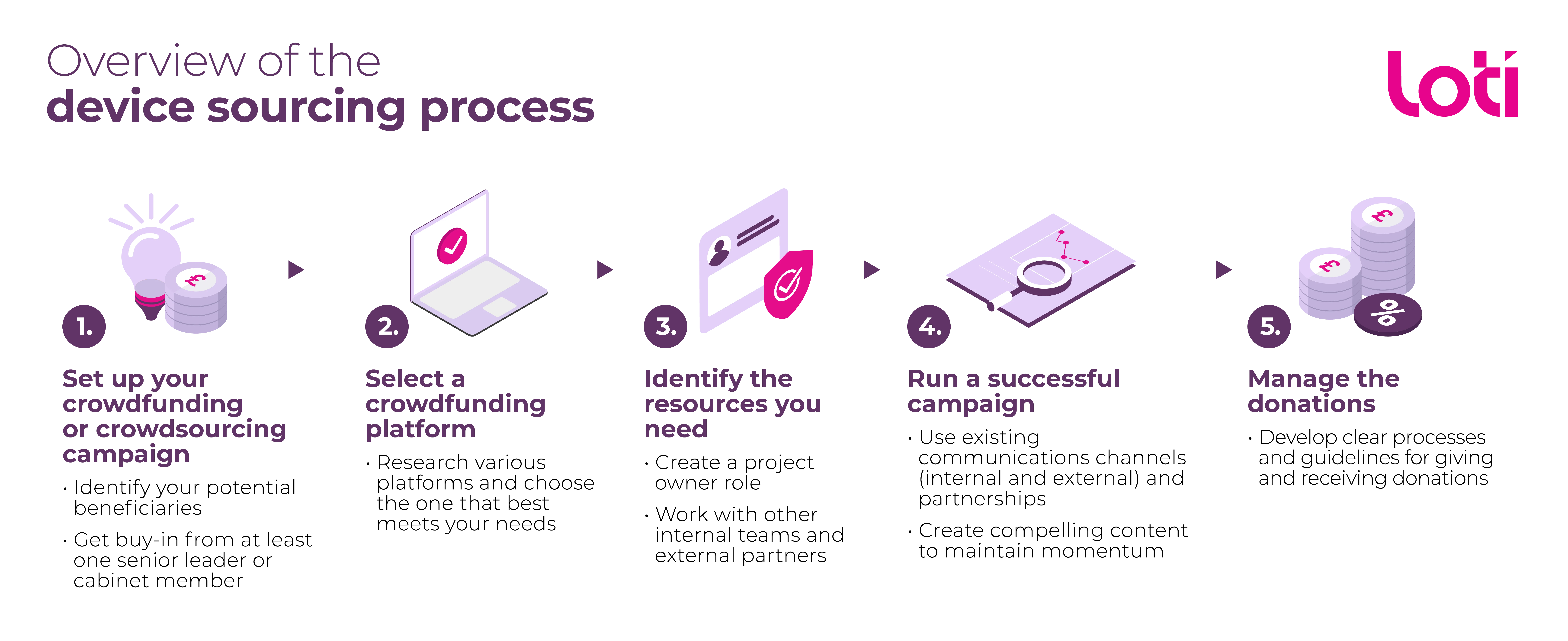
This toolkit takes key learnings from the way several organisations have recently sourced digital devices for local residents and provides advice if you wish to set up a similar scheme. Please note, the recommendations in this guide are not exhaustive.



One of the six key challenges in digital inclusion is meeting the scale of need for devices (sometimes referred to as ‘device poverty’).

Crowdfunding and crowdsourcing digital devices are common methods used to source devices for local residents to help them get online. Both approaches have advantages and disadvantages.

In this section, we outline the key considerations prior to setting up your scheme and provide tips based on lessons learned from existing crowdfunding and crowdsourcing schemes.

We recommend that you conduct in-depth research before selecting a crowdfunding platform for your scheme.

Running a successful crowdfunding or crowdsourcing campaign is best done by a multi-disciplinary team.

Things to consider so that your communications campaign successfully raises awareness of your crowdfunding or crowdsourcing scheme and maintains momentum.

Once you have done the hard work to secure donations (either funds or digital devices), it is time to distribute them to those most in need in your community.

Southwark Council partnered with the London South Teaching School Hub to crowdfund and crowdsource laptops for digitally excluded pupils in the borough.

Lambeth Council launched a crowdfunding campaign to raise funds to purchase laptops, tablets and internet access for young people in education in the borough.

Sunderland City Council (SCC) appealed to individuals and businesses for device donations.

During the COVID-19 pandemic, Essex County Council (ECC) crowdsourced devices from individuals and businesses to be refurbished or stripped for parts and subsequently sold on.